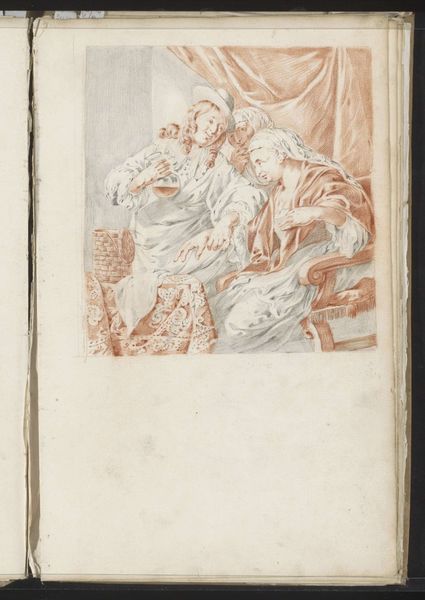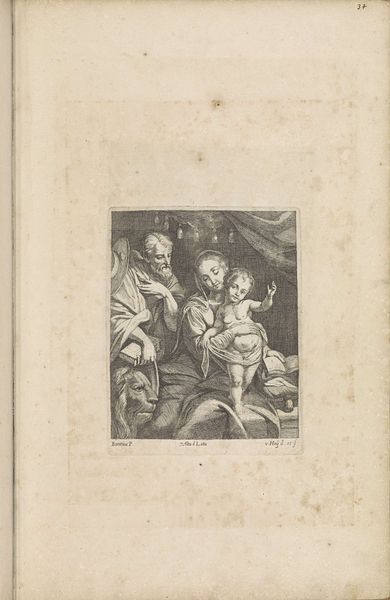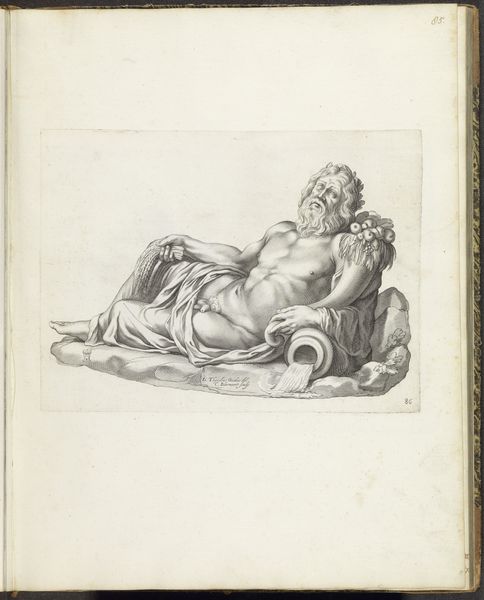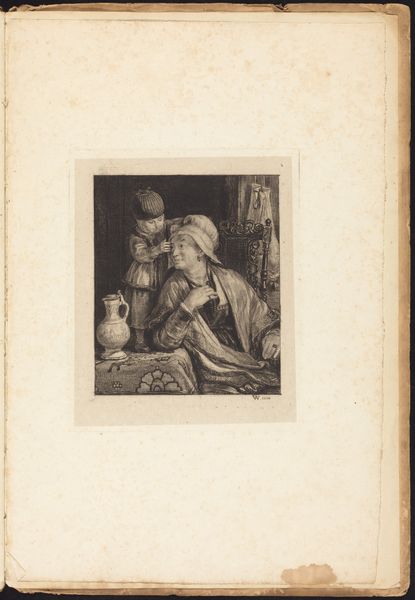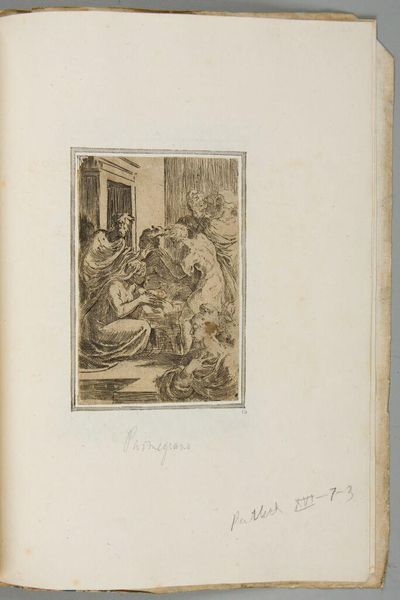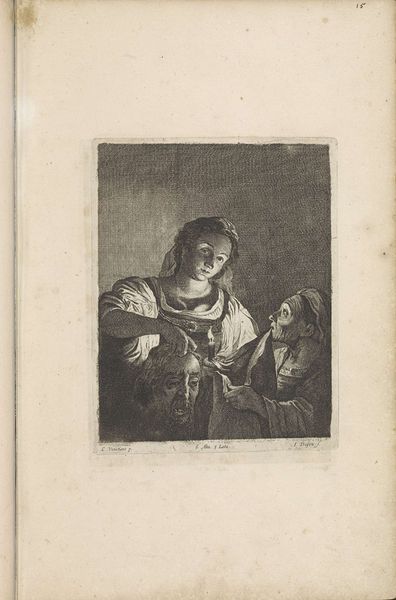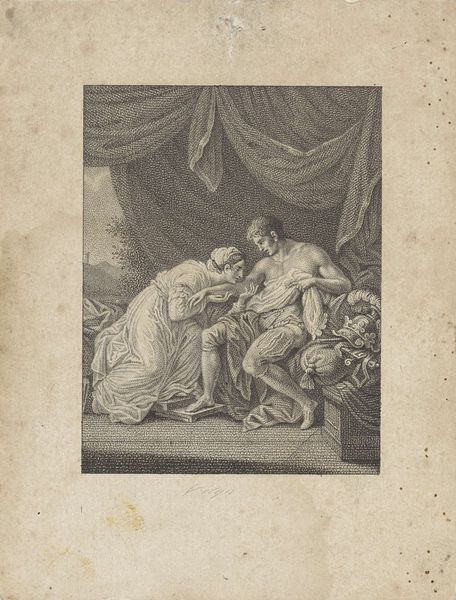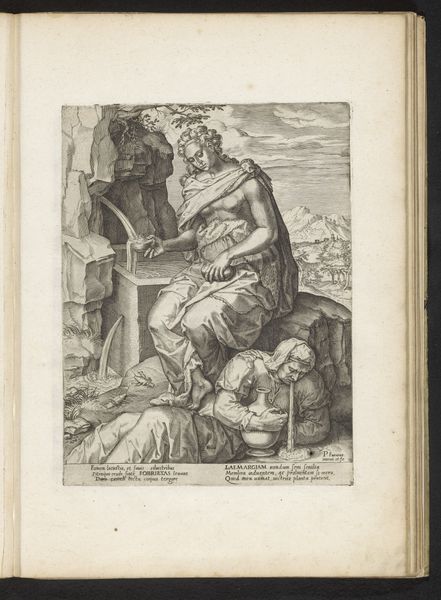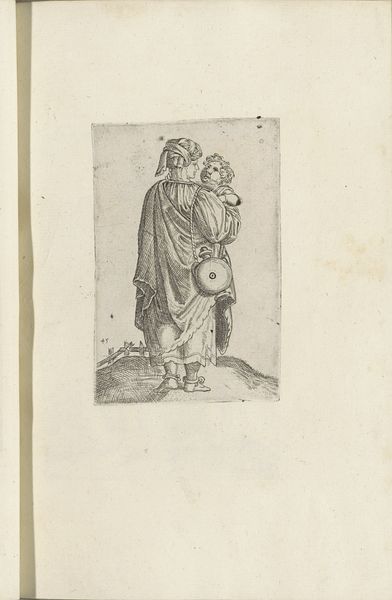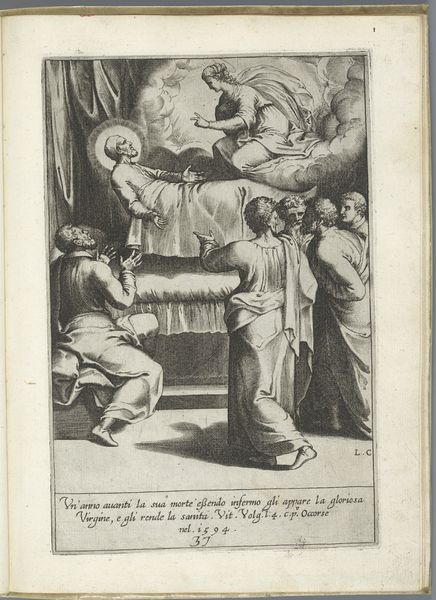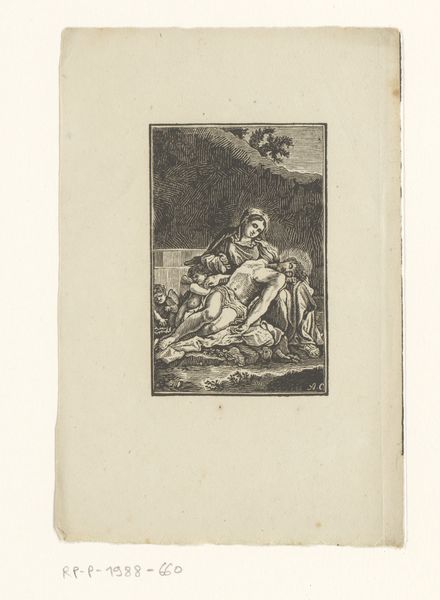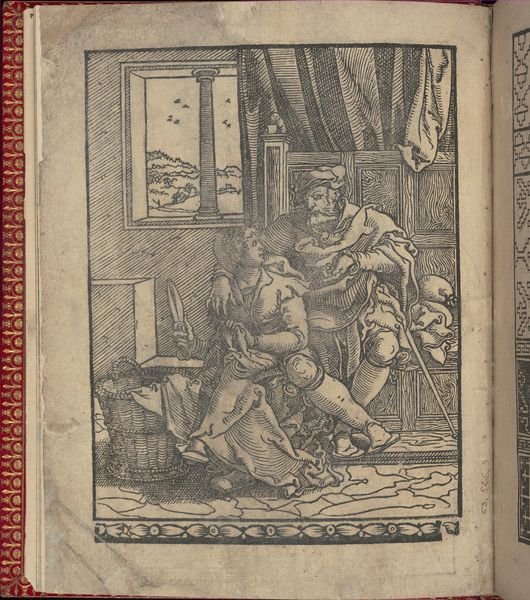
drawing, print, engraving
#
drawing
#
baroque
# print
#
figuration
#
line
#
history-painting
#
engraving
Dimensions: height 180 mm, width 148 mm
Copyright: Rijks Museum: Open Domain
Curator: It has a rather austere feel to it. Stark lines, muted tones… A subdued rendering of a gruesome act. Editor: Indeed. What we're seeing here is an engraving from 1660, titled "Judit met het hoofd van Holofernes" created by Nikolaas van Hoy. It depicts the biblical Judith with the head of Holofernes. The medium itself is key; this print allows for wider dissemination of the image and its message. Curator: It's a visual articulation of female strength against patriarchal oppression, no? Judith, as a widow, takes action against the threat to her people, transgressing typical gender roles of her time. The composition centers her agency, with a decisive, almost sorrowful look. How do you interpret her pose and action within the context of the Baroque period and the work of Van Hoy? Editor: Well, the engraving itself speaks to the political context, as I see it. It implicates power struggles—consider how reproductive processes enabled these kinds of works to function as prototypes for the consolidation of narratives within society at that time. Note the fineness of the lines, the time investment it takes to create such an intricate image for widespread circulation. The value isn't just the image itself but the labor embodied in its creation. Curator: That’s true; labor shapes these materials and processes into narratives. In examining the historical roots, we can trace how narratives such as these influenced the socio-political understandings of female power, resistance, and perhaps more subtly, a sanctioned form of rebellion. Editor: And the consumption, too, has to factor in. Prints like this found their way into commonplace books and broadsides. They're consumed, altered, reprinted, and repurposed by all sorts of workshops. What remains after that alteration—or the labor done in it—can often be seen in later creations. The artwork isn’t isolated from its function within an industrial system of print production and circulation. Curator: So, we see that this isn't just a snapshot of a biblical scene, but a convergence of artistic labor, socio-political messages, and of course, the narrative threads surrounding a strong female figure from history, as these circulated and manifested at the time. Editor: Exactly, which continues to ripple out, to this day.
Comments
No comments
Be the first to comment and join the conversation on the ultimate creative platform.
